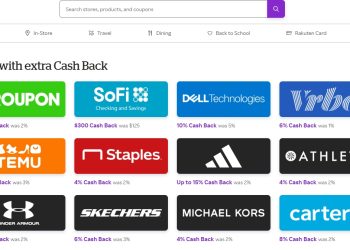Effective Strategies for Leveraging Influencers in Marketing Campaigns
Influence is the new currency in marketing, but far too many campaigns fail to tap its true potential.
The idea of leveraging influencers to promote products or ideas isn’t new, but how we execute this strategy is evolving at an unprecedented rate. As someone who started marketing back when TV ads ruled the day, I’ve seen firsthand how the power dynamics have shifted with the rise of social media. No longer does an ad agency need to place million-dollar bets on national campaigns with faceless audiences. Now, a well-positioned Tweet or Instagram post can eclipse the effectiveness of traditional ads, reaching customized, engaged audiences who trust the messenger. But there’s a catch: far too often, brands misuse or misunderstand the full scope of what influencer marketing can achieve.
Why the Traditional Mindset Isn’t Enough
Conventional marketing wisdom often treats influencers as mere tools to push products, reducing them to glorified amplification devices. This couldn’t be further from the truth. Imagine a megaphone used to broadcast your brand message—loud, clear, but utterly impersonal. Now imagine the megaphone is traded for one-on-one conversations between trusted individuals and their devoted communities. That’s what today’s influencer landscape offers: authenticity and relatability.
Consider this: in an era where consumers are bombarded by thousands of ads daily, a recommendation from a trusted influencer carries unparalleled weight. Studies show that 92% of consumers trust influencers over traditional advertisers—a staggering statistic that challenges the foundation of old-school marketing.
What Makes an Influencer “Influential?”
Not all influencers are created equal, and here lies the rub. Brands often fall into the trap of chasing vanity metrics like follower counts or engagement rates while neglecting one critical factor: alignment. Collaborating with an influencer whose values misalign with your brand’s can alienate your target audience instead of attracting them.
Let’s borrow a concept from psychology: the principle of trust-building. Trust is sustained by three pillars—credibility, reliability, and emotional connection. Influencers operate the same way. Instead of focusing solely on the size of their audience, marketers need to assess whether an influencer’s ethos, tone, and storytelling align with their brand identity.
Lessons from Cross-Discipline Success Stories
Drawing inspiration from business innovation and even artistic collaboration can help marketers better utilize influencers. Consider how leading tech companies approach product testing—they iterate continuously, learning from their failures and successes. Similarly, influencer campaigns require agility. It’s not a one-time transaction; it’s an evolving partnership.
Taking cues from fields like behavioral economics, brands can better understand audience motivations. Why does someone purchase a wellness product endorsed by an influencer? It’s not just about the product; it’s about the identity it promises. When executed correctly, influencers don’t just sell items—they sell aspirations.
Practical Steps for Building Winning Campaigns
-
Identify Micro-Influencers:
These are niche authority figures with smaller audiences but higher engagement rates. Micro-influencers often feel less “corporate” and more authentic to their followers. -
Build a Long-Term Relationship:
Rather than one-off campaigns, invest in building sturdy relationships with influencers who can grow alongside your brand. -
Prioritize Content Co-Creation:
Allow influencers creative freedom to tailor the message authentically. Give them room to adapt your brand narrative to what resonates with their audience. -
Leverage Data:
Use advanced analytics tools to measure the performance of influencer campaigns—not just impressions, but conversions and audience sentiment as well. -
Evaluate Fit Before Fame:
Pick someone whose values, voice, and content style match your audience’s expectations.
What the Future Holds
The role of influencers in marketing is bound to change as technology advances. Virtual influencers—AI-built personas with hyper-curated content—are already entering the scene. Imagine influencers who never sleep, never have PR scandals, and can fine-tune their brand voice at the click of a button. But there is something irreplaceably human about real influencers, particularly their stories and personalities.
Social commerce, blended realities (AR/VR), and decentralized platforms will reshape how we think about influence. As marketers, it’s crucial not only to adapt but also to be part of writing this new playbook. The brands that grow will be those that foster adaptability, partnership, and foresight.
A Final Word
Influencer marketing isn’t about using others to tell your story; it’s about finding the right voices to enrich and amplify an existing narrative. By treating influencers as partners rather than mouthpieces, brands unlock the incredible power of trust and authenticity. This is no longer an optional strategy but an essential lever for modern marketing success.
Your move: Find and nurture those voices—and be prepared to see your brand reach new heights.













